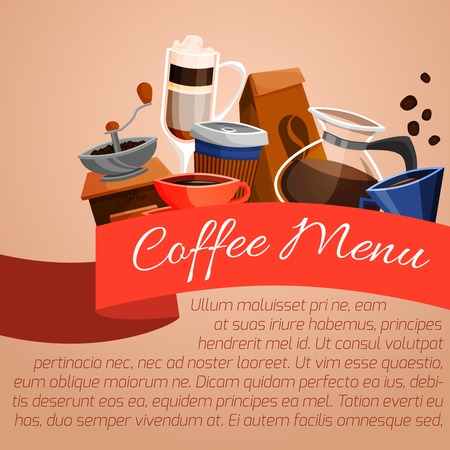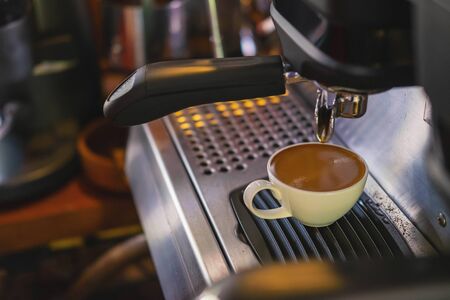Selecting the Right Coffee Brewing Equipment
Choosing the optimal brewing equipment is one of the most important early decisions for new coffee shop owners in the United States. With American customers expecting both speed and quality, your espresso machines, drip brewers, and grinders must be tailored to meet high-volume workflows while delivering consistent flavor profiles. When evaluating espresso machines, consider programmable dosing, dual boilers for simultaneous brewing and steaming, and user-friendly interfaces—features that empower baristas to serve classic lattes or trendy Americanos with precision during busy morning rushes. For drip coffee, invest in commercial-grade brewers with adjustable batch sizes and temperature controls to cater to customers who favor grab-and-go convenience without compromising on taste. Don’t overlook grinders: choose burr grinders with precise grind size adjustments to support everything from single-origin espressos to pour-over specialties. Prioritizing reliability, ease of cleaning, and manufacturer support will ensure these core investments set your shop up for both operational efficiency and customer satisfaction in a competitive U.S. market.
Essential Accessories and Tools
When launching a coffee shop in the U.S., having the right accessories and tools is just as critical as investing in your main equipment. These essentials help ensure that every cup meets high standards of consistency, quality, and operational efficiency—factors that American customers have come to expect from specialty coffee shops.
Core Accessories for Precision and Consistency
To create consistently great coffee, baristas rely on a set of key tools. Here’s a quick reference guide to some must-have items:
| Tool | Purpose | U.S. Coffee Shop Standard |
|---|---|---|
| Tamper | Compresses espresso grounds evenly for uniform extraction | Ergonomic, often with a 58mm base for commercial machines |
| Coffee Scale | Measures dose and yield for precise recipes | Digital, waterproof, quick-read display |
| Milk Pitcher | Steams and pours milk for lattes/cappuccinos; enables latte art | Stainless steel, various sizes (12oz/20oz) |
| Coffee Grinder Brush | Keeps grinder burrs clean of residue oils and grounds | Nylon bristles preferred for durability |
Sanitation and Efficiency Tools
Cleanliness is a non-negotiable aspect of any successful American coffee operation. The following accessories support daily maintenance and food safety compliance:
- Group Head Brushes: For cleaning espresso machine group heads between shots.
- Puck Knock Boxes: Collects spent espresso pucks quickly and hygienically.
- Cafe Towels & Barista Cloths: Separate towels designated for steam wands, counters, and portafilters prevent cross-contamination.
Operational Impact of Accessory Choices
Selecting the right tools doesn’t just improve beverage quality—it also streamlines workflow. In a busy U.S. café environment, well-designed tampers or fast-response digital scales can save valuable seconds per order, while proper cleaning gear extends the lifespan of expensive equipment and supports health inspection readiness.
Smart Investment Tips
Aim for durable, barista-approved brands when outfitting your shop. Investing upfront in reliable tools reduces replacement costs and helps build a reputation for excellence—a crucial factor in attracting discerning American coffee drinkers.

3. Smart Investments in Water Filtration and Quality
When opening a new coffee shop in the U.S., water quality is a critical, yet sometimes overlooked, factor that directly influences your coffee’s flavor profile and your business’s compliance with local health codes. Since coffee is composed of approximately 98% water, the minerals, chemicals, and purity of your water source will impact everything from espresso extraction to drip brews and even the performance and longevity of your equipment.
Understanding Water’s Role in Coffee Flavor
The mineral content in water—especially calcium, magnesium, and sodium—affects how flavors are extracted from coffee grounds. Hard water can lead to under-extracted, flat-tasting coffee, while overly soft or distilled water may result in sour or weak brews. Additionally, untreated municipal water often contains chlorine or chloramine, which can impart off-flavors and mask nuanced tasting notes that specialty coffee drinkers appreciate.
Choosing the Right Filtration System
Investing in a high-quality filtration system is not just about taste; it’s about protecting your investment in brewing equipment as well. Scale buildup from hard water can damage espresso machines and brewers over time, leading to costly repairs or replacements. American coffee shops often opt for reverse osmosis (RO) systems paired with remineralization cartridges to create a balanced water profile ideal for brewing. Carbon block filters are also popular for removing chlorine and organic contaminants while preserving essential minerals.
Compliance with Local Health Standards
Health departments across the United States enforce strict guidelines regarding water safety for foodservice businesses. Regular testing for contaminants and maintaining appropriate filtration are essential not only for customer safety but also for passing inspections and avoiding fines. Documented maintenance and filter replacement schedules will help ensure ongoing compliance and consistent beverage quality.
Making Informed Investment Decisions
Smart investments in water quality pay dividends by elevating cup quality, safeguarding expensive machinery, and meeting legal requirements. For new coffee shop owners, consulting with local water treatment experts and referencing Specialty Coffee Association (SCA) standards provides a reliable roadmap to choosing systems that best fit their unique needs and regional regulations. Ultimately, prioritizing water filtration is an essential step toward sustainable success in America’s competitive coffee scene.
4. Optimizing Point-of-Sale and Inventory Systems
For American coffee shop startups, investing in advanced Point-of-Sale (POS) and inventory management systems is no longer optional—it’s a strategic necessity. Today’s cafe environments are fast-paced, demanding quick transactions, seamless service, and precise inventory tracking. Modern POS solutions do much more than process payments; they streamline operations, enhance customer experience, and provide critical data for smarter business decisions.
Key Benefits of Modern POS Systems
Modern POS platforms are designed for the dynamic needs of American cafes. They support multiple payment methods—credit/debit cards, mobile wallets (like Apple Pay), and even contactless payments—catering to the preferences of a diverse clientele. Integrated loyalty programs and real-time sales analytics also help boost repeat business and inform menu adjustments.
Comparing Traditional vs. Modern POS Features
| Feature | Traditional POS | Modern Cloud-Based POS |
|---|---|---|
| Payment Methods | Cash/Card Only | Cash, Card, Mobile Wallets, Contactless |
| Loyalty Integration | Manual Punch Cards | Automated Digital Programs |
| Real-Time Reporting | Limited/Manual Reports | Instant Analytics & Insights |
| Remote Access | No Remote Capabilities | Access Data Anywhere via Cloud |
| Scalability | Difficult to Upgrade | Easily Add Locations/Users |
The Role of Inventory Management Tools in U.S. Cafes
Efficient inventory management is essential to avoid both shortages and overstock—two common pitfalls that can erode profit margins. Modern inventory tools track stock levels in real time, send automatic low-stock alerts, and even forecast future needs based on sales trends. Integration with your POS system allows for seamless ingredient tracking from supplier delivery to cup-in-hand service.
Café Inventory Best Practices:
- Automate Stock Tracking: Use barcode scanners or RFID to reduce human error.
- Set Par Levels: Establish minimum stock thresholds for all key ingredients.
- Analyze Waste: Identify top waste items to refine ordering and preparation processes.
- Supplier Integration: Sync directly with vendors for streamlined ordering and restocking.
The right investment in POS and inventory systems sets the foundation for operational efficiency, financial transparency, and customer satisfaction—all critical for thriving in America’s competitive coffee market.
5. Creating an Inviting Atmosphere with Furniture and Fixtures
One of the most influential factors in a coffee shop’s long-term success is its atmosphere, which is largely determined by your choice of furniture, fixtures, and overall décor. When starting a new coffee shop in the U.S., it’s essential to select seating and furnishings that are not only durable but also comfortable and aligned with your community’s expectations.
Durability Meets Daily Demands
Your furniture investment should withstand the high-traffic nature of a busy café. Opt for commercial-grade tables, chairs, and barstools made from sturdy materials like metal, hardwood, or reinforced plastics. These can resist everyday wear-and-tear, spills, and frequent cleaning, reducing long-term replacement costs—a smart move for any startup budget.
Comfort Keeps Customers Coming Back
Americans value comfort as much as their caffeine fix. Choose ergonomic chairs with supportive backs and cozy cushions for customers who want to linger over laptops or conversations. Consider a mix of seating styles: communal tables for groups, individual chairs for solo guests, and soft lounge areas for those seeking relaxation. This variety invites repeat visits by accommodating different customer needs throughout the day.
Lighting: Setting the Mood
Lighting plays a crucial role in shaping the ambiance of your shop. Natural light is always appealing; maximize windows where possible. For artificial lighting, blend warm-toned pendant lights over tables with brighter task lighting at service counters. Adjustable dimmers can help you shift from a bright morning vibe to a relaxed evening setting—reflecting common trends in American coffee culture.
Décor: Reflecting Community Identity
Décor should resonate with local tastes while expressing your brand story. In many U.S. neighborhoods, patrons appreciate touches of local art, reclaimed wood accents, or eco-friendly materials. Display rotating works from area artists or offer community bulletin boards to foster a sense of belonging. Small details—from wall murals to custom mugs—can transform your space from generic to memorable, encouraging both social media sharing and return business.
Smart Investments for Lasting Appeal
While it may be tempting to cut corners on furnishings initially, investing in quality furniture and thoughtful design pays off by cultivating customer loyalty and positive word-of-mouth. Survey your target demographic or visit other popular cafés in your area to understand what resonates locally. By prioritizing comfort, durability, and aesthetic relevance, your shop will not only attract new visitors but inspire them to become regulars—a cornerstone of sustainable growth in America’s vibrant coffee scene.
Sustainability Tools and Eco-Friendly Choices
As new coffee shops emerge in the dynamic landscape of U.S. cities, integrating sustainability into your equipment strategy is not just a trend—its becoming a consumer expectation. Investing in energy-efficient appliances is a smart move for both operational cost savings and environmental responsibility. Look for ENERGY STAR-rated espresso machines, grinders, and refrigeration units to significantly reduce electricity consumption. These upfront investments pay off over time through lower utility bills and can even enhance your brand’s reputation among eco-conscious customers.
Waste management solutions are also essential for modern coffee shops aiming to minimize their ecological footprint. Equip your space with clearly labeled recycling and composting bins, and train your staff on proper waste sorting procedures. Many urban consumers will notice—and appreciate—your commitment to reducing landfill waste, especially when paired with initiatives like reusable cup programs or discounts for customers who bring their own mugs.
Choosing sustainable materials extends beyond disposable cups and straws. Opt for compostable or biodegradable packaging, utensils, and napkins sourced from renewable resources. Whenever possible, partner with local suppliers to reduce transportation emissions and support the regional economy. Even furniture choices—such as reclaimed wood tables or recycled metal chairs—can communicate your dedication to sustainability.
Ultimately, these eco-friendly investments align closely with the values of today’s urban consumers, who often seek out businesses that demonstrate environmental stewardship. By prioritizing sustainability tools and responsible practices from the outset, you position your coffee shop as a forward-thinking leader within the local community—and create lasting value for both your business and the planet.

